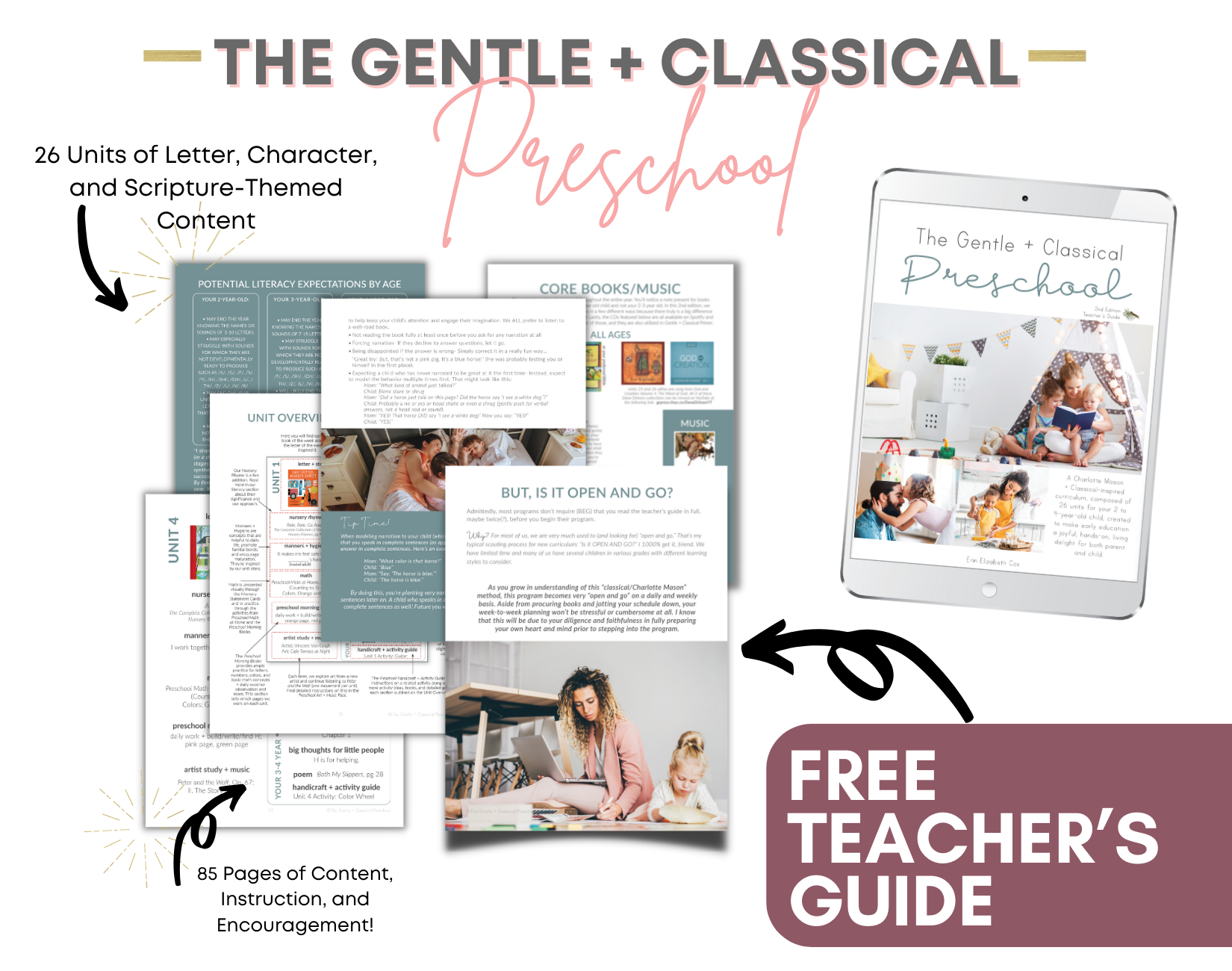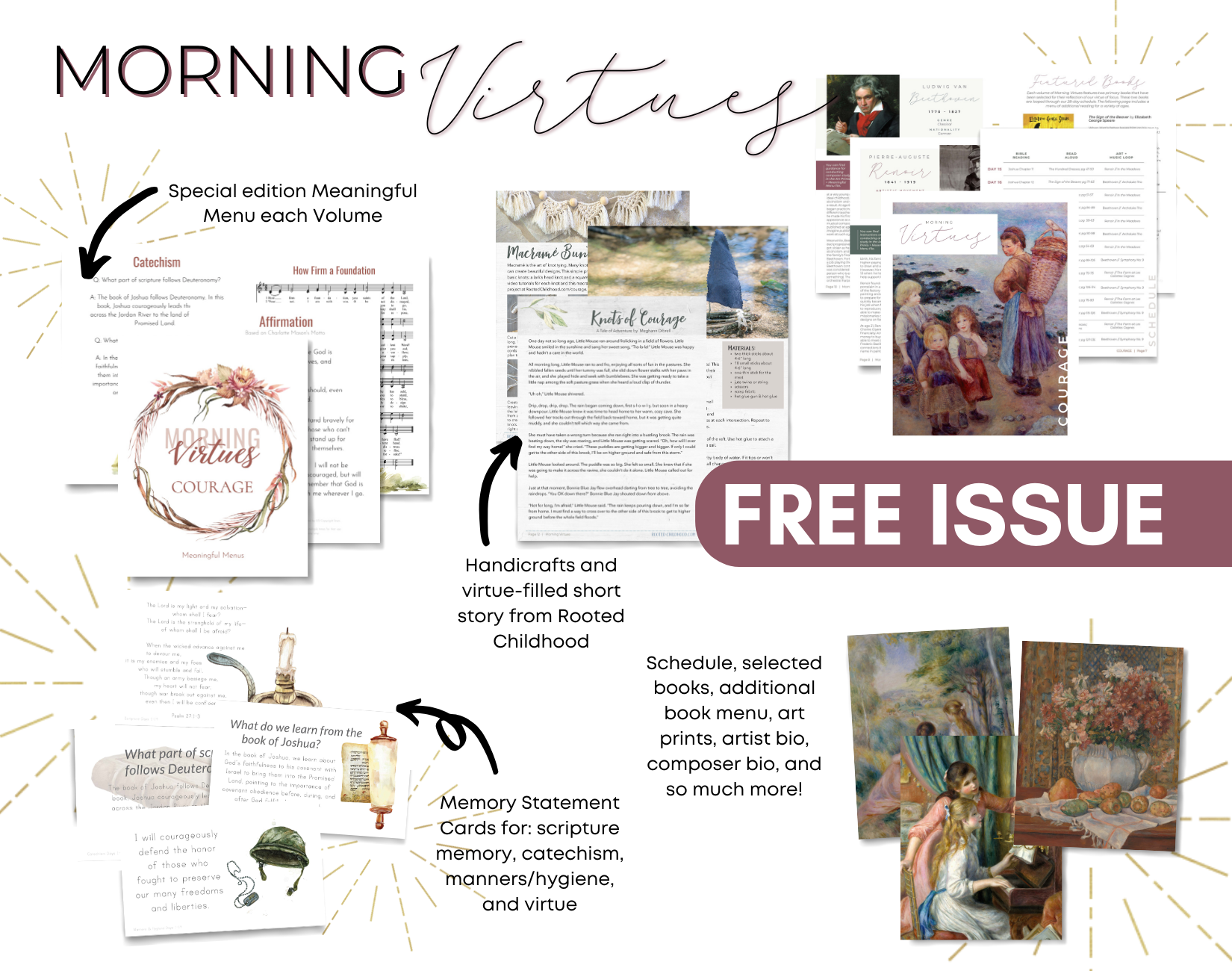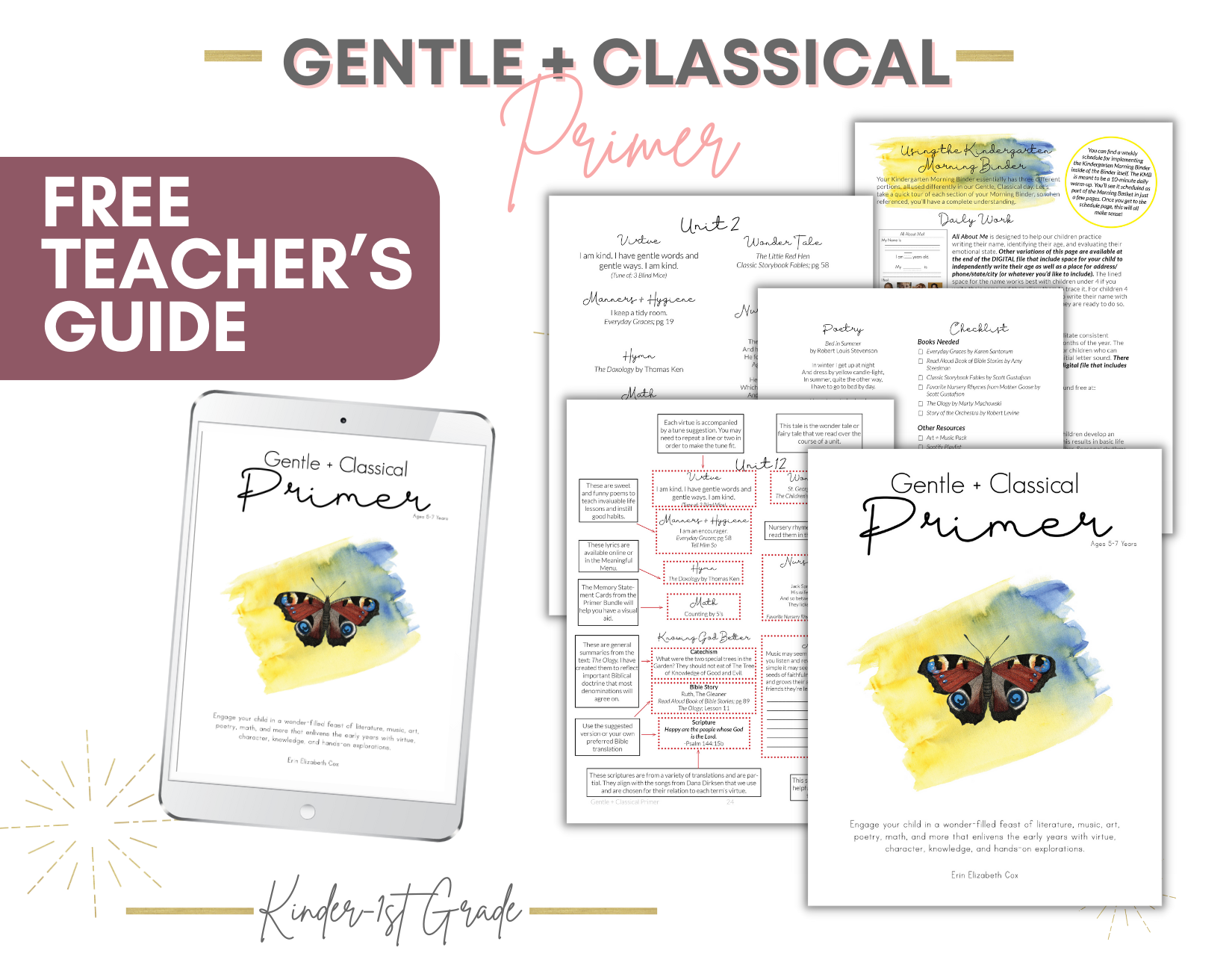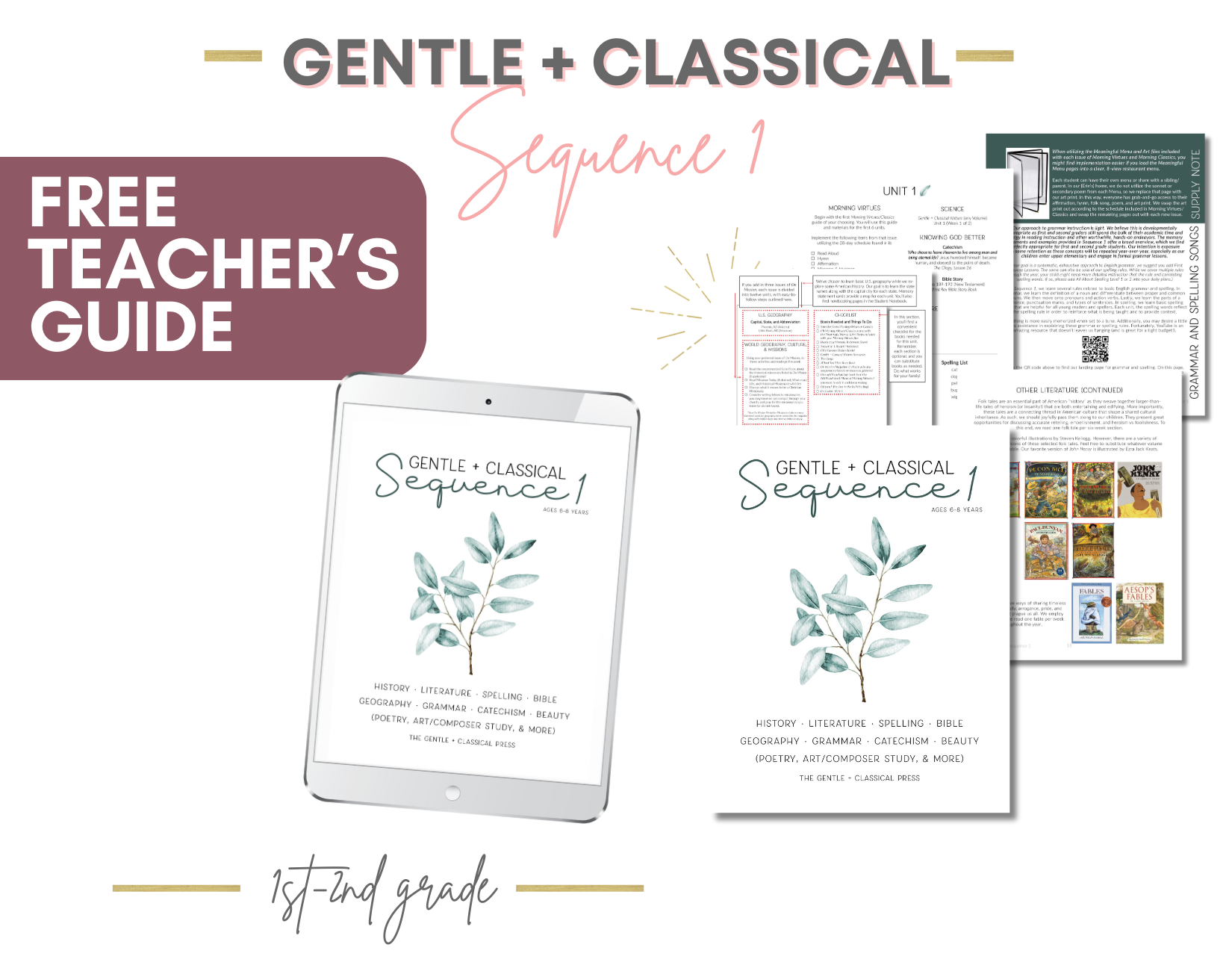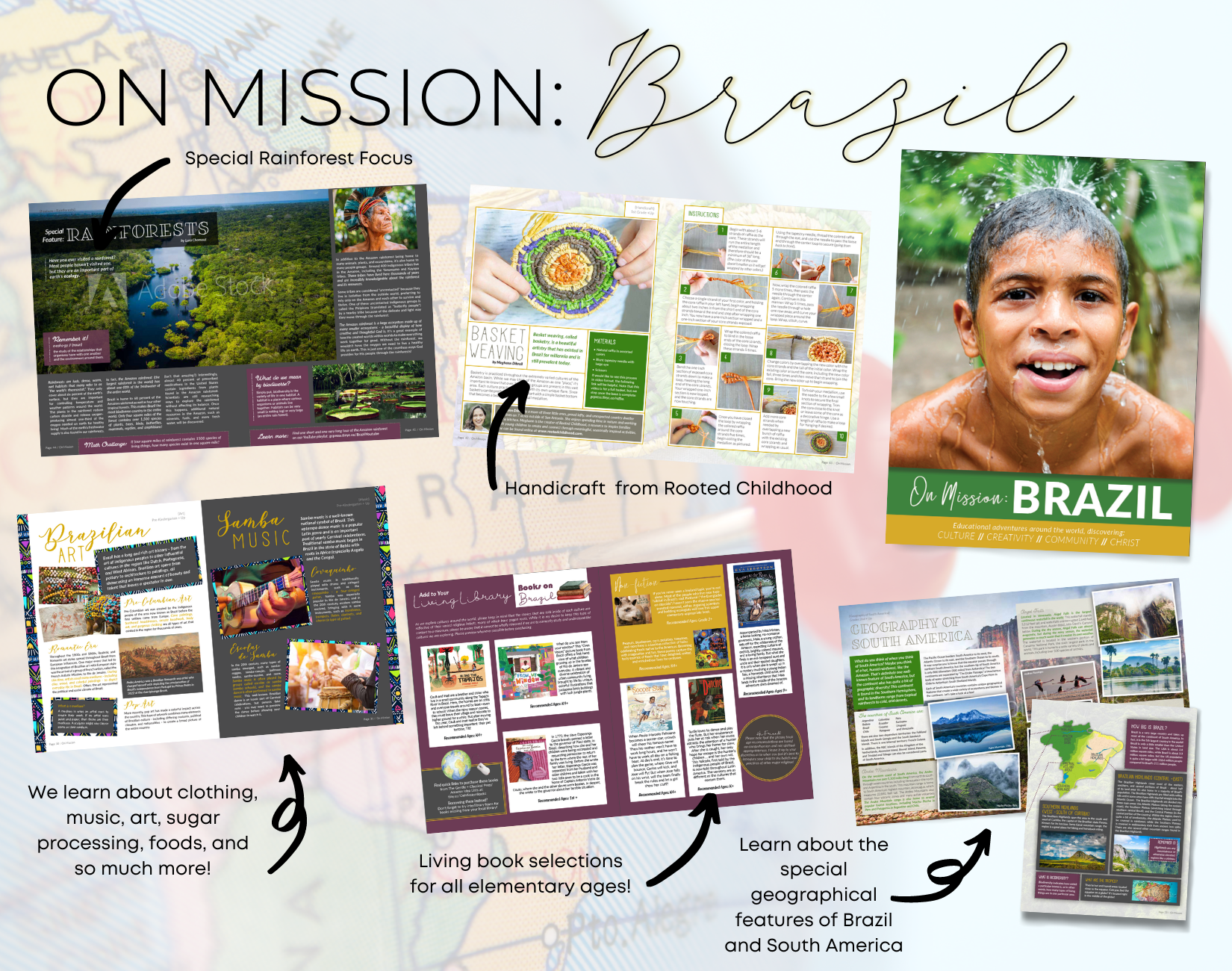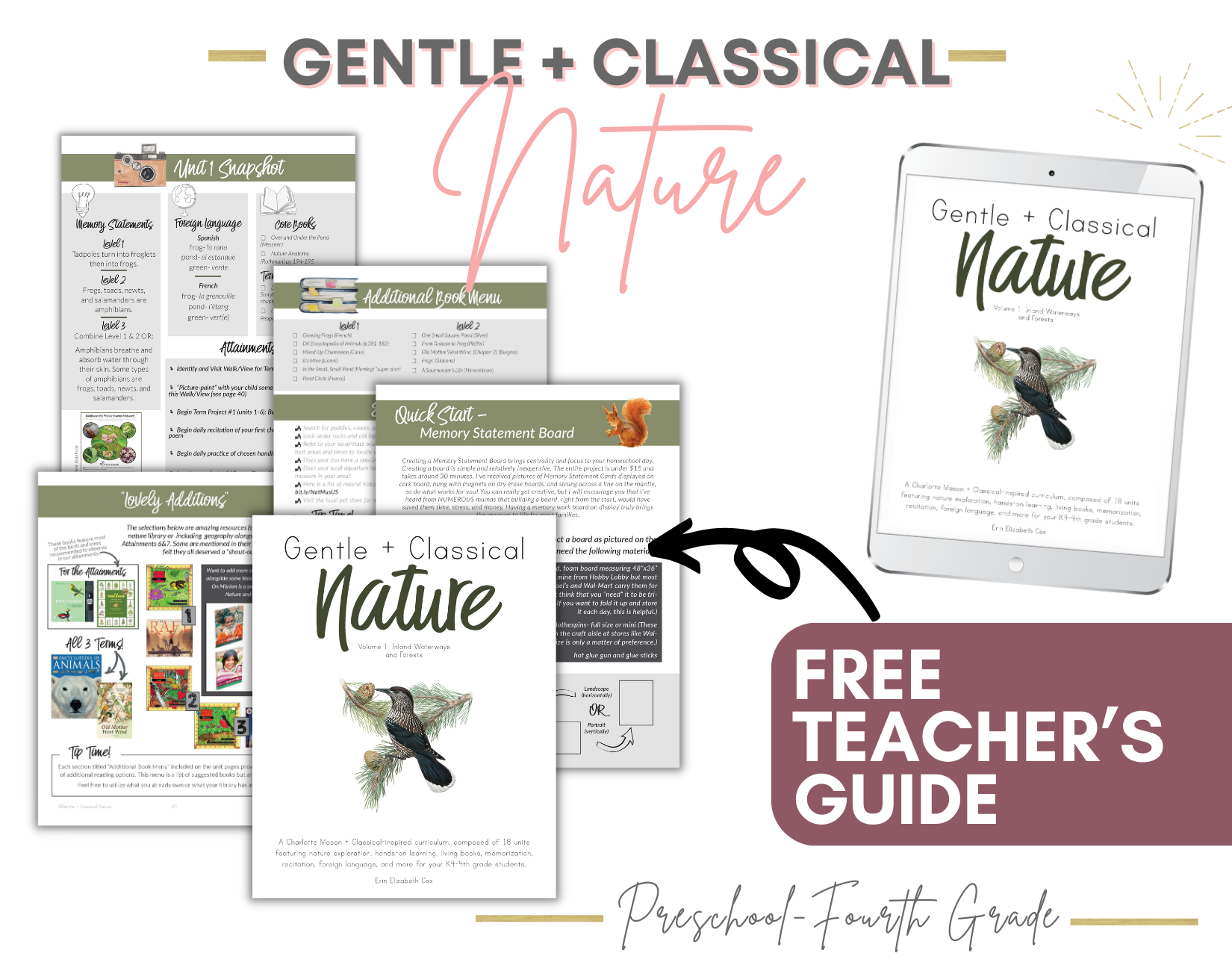Does Your Homeschooler REALLY Need Latin?
/Let’s start here: You do not have to teach Latin to be a classical educator.
You don’t have to teach Latin to follow the Charlotte Mason method. You don’t have to teach it to be a “serious” homeschooler or to prove your commitment to tradition. The truth is far more gracious than that, and far more freeing.
What Is Classical Education?
Let’s take a moment to define classical education—not as a checklist or a badge of rigor, but as the transformative, whole-person tradition that it truly is.
Classical education is a tradition of cultivating wisdom and virtue by nourishing the soul on truth, goodness, and beauty. It employs the liberal arts and the Great Books to form a student’s character and intellect, equipping them to love what is lovely, to act rightly, and to discern what is good.
That’s it. That’s the heart.
It is not a mechanical system, but a philosophy of formation. The liberal arts (language included) were never meant to be boxes to check. They are disciplines of the soul—ordered, intentional ways of pursuing wisdom.
As Karen Glass writes in Consider This, “The development of the intellect was meant to serve in the formation of good character, and good conduct was the desired end of wise thinking.”
So Then… Why Latin?
Historically, Latin was the language of scholarship, science, theology, and law. For centuries, the most significant texts—from medical treatises to letters between theologians—were written in Latin. To access the fullness of the scholarly tradition, one had to know Latin.
But today, nearly all of those writings (or their modern equivalents) are widely available in translation. Latin is no longer required to study the Great Books, and it certainly is not required to offer your child a beautiful, classical education.
In fact, many modern classical educators choose not to teach Latin at all. Their children are still formed in virtue. They still grow in wisdom. They still experience wonder and delight and curiosity. They are still well-educated.
Why We’re Learning It Anyway
Our reasons are different.
We want to hold hands with the past, not just read about it. We want to engage primary texts in their native tongue, hearing the voices of the Church Fathers and the poets of Western civilization in the cadence in which their thoughts were born. We want to experience the untranslatable beauty of theology, poetry, and Scripture not filtered through the limits of another language.
We also chose Spanish—for the sake of our neighbor. Latin helps us look back. Spanish helps us look around. Both are rooted in love.
In our home, Latin is not a logic puzzle. It is not an SAT prep tool. It’s not about parsing sentences or memorizing declension charts. We are approaching Latin through the Natural Method—an immersive, story-based approach that prioritizes comprehension and meaning before grammar. In many modern curricula, Latin is treated as a code to crack, not a language to understand. Fluency is rarely the goal.
Our Goal: Fluency, Not Function
For us, fluency is the only reason to study any language.
Studying Latin “so that” we can learn Spanish better makes about as much sense as immersing yourself in Italian to better prepare for French. If you want to learn French—learn French. You don’t have to go to Italy first. Our goal isn’t to analyze Latin. It’s to understand it. To read it. To step into the world where it was spoken and thought and written.
One of the biggest realizations that has shaped our language vision is this: translation always loses something. When you speak through a translator, you find yourself adding facial expressions, gestures, or tone to try to communicate not just what you mean, but how you mean it. You’re trying to make sure your heart makes it through intact. But when we speak with fluency, that effort becomes seamless. We don’t have to pantomime meaning—we live in it.
What If They Never Use It?
My children may never read Cicero for pleasure. Or maybe they will. They may never use Latin professionally or academically. That’s okay. Because Latin isn’t a test prep strategy for us. It’s part of our inheritance as members of Western civilization. It’s embedded in our laws, our government, our sciences, and our theology.
This isn’t about trying to fit our homeschool into a mold. It’s about casting a vision for how our family engages the world—and then choosing the tools that help us build that vision, while holding it all loosely under God’s sovereign care.
If we commit this effort to Him, then it won’t be wasted, no matter where it leads.
Our Vision for Language Learning
That’s why I took the time to research, to pray, and to write a vision statement for our family. It’s something I can return to when I grow weary or start to second-guess the value of this path.
Here’s what we wrote:
Latin forms us in patience, precision, and humility. It invites us to hear the voices of the Church Fathers and the poets of the West not in translation, but in the cadence and nuance in which their thoughts were born. We learn Latin to receive wisdom from the past with care, reverence, and gratitude.
Spanish opens our ears to the present. It equips us to love our neighbors, to see the Imago Dei in the voices around us, and to carry the Gospel across both street corners and seas. We learn Spanish to speak with grace, to serve with empathy, and to enter into fellowship with the global Church.
In both languages, we pursue nuance, for the sake of love. The nuance that lets us rightly divide the words of Augustine is the same nuance that teaches us to listen well to a Spanish-speaking friend.
This is why we learn languages: not for utility alone, but for relationship, for formation, and for love.
May our study build bridges—between past and present, between neighbor and nation, between knowledge and wisdom. And may we grow into people who listen well, speak truly, and carry Christ into every conversation.
But Isn’t That a Lot?
That may sound lofty. But it doesn’t have to be intimidating.
There are beautiful, gentle, life-giving ways to incorporate Latin in your home, if you choose to. I’m currently self-teaching using Familia Romana and attending a Circe Practicum this summer just for fun. In the fall, I’ll be implementing Latin in a casual, conversational way during our Morning Basket time—10 to 15 minutes each day.
I’m labeling household objects with Latin and Spanish nouns. We’ll read through Minimus together, page by page, making discoveries as we go. I’m hoping to create simple “Latin Menus” that include nursery rhymes, hymns, and Scripture—choosing content that is already familiar so that interpretation comes naturally. Eventually, we’ll add picture books. But for now, no declension charts in sight.
You Don’t Have to Say Yes
The point is not to convince you to teach Latin.
The point is this: You don’t need Latin to be a classical educator. And if you do teach it, you don’t need to do it for the same reasons we are. But what you do need is vision and clarity.
You need to know where you're going and why you're investing these days in this way. Not because you can control the outcome, but so that you can move forward with peace and purpose. If you have that vision, you can confidently say yes or no to Latin—or to any subject—without guilt or confusion.
Start with Vision
If you’re still in the process of forming that philosophy, that’s okay too. Start with prayer. Read slowly and deeply. Continue your own education. Let your vision build over time. This is one of the sweetest gifts you can give your homeschool—not a perfect plan, but a rooted one.
So whether Latin is on your radar, off your radar, or sitting on the maybe shelf, I hope you feel encouraged and equipped—not pressured. And if you’re curious to hear more about how this plays out in our home this year, let me know. I’d be happy to share our journey as we walk it.
And I’d love to walk beside you in yours.

